Number Sense Teaching Resources
Browse printable worksheets, hands-on math center activities and more teaching resources designed to teach number sense in the elementary classroom.
Developing number sense is an important building block for elementary math students and unlocks a deeper understanding of numbers and their relationships. Aligned with Common Core, each worksheet, game and century activity was created by teachers with teachers — and students — in mind to help build those skills in ways that engage and excite students about numbers!
Want to learn more about number sense? Read on for a primer from our teacher team, including a definition of number sense, how to assess this important math skill and more!
What Is Number Sense?
In the most basic sense (no pun intended), number sense refers to a student's intuitive understanding of numbers and their relationships. It includes the ability to estimate and compare quantities, understand numerical patterns and relationships and make reasonable judgments about the accuracy of calculations.
When students show an understanding of numbers, their size, relationships, and how they are affected by the four mathematical operations, what they're really showing is their number sense.
In an educational setting, building number sense is closely related to other foundational skills such as problem-solving, critical thinking and logical reasoning. As our students get older, it will become a crucial skill for daily life they will use to manage finances, calculate time and make decisions based on numerical information.
Teach Starter Teacher Tip: Although the names may seem interchangeable, it's worth noting that number sense is not the same as mathematical fluency or memorization of algorithms, but rather a deep understanding of the underlying concepts and relationships between numbers.
When Does Number Sense Develop?
There is no one grade level when we're teaching students number sense — instead, it continues to develop and become more sophisticated as students progress through elementary school.
Research suggests that babies as young as 6 months old can distinguish between small and large numbers of objects, and by preschool, students are already working on number sense as they begin to learn counting and one-to-one correspondence. At this level, they're also beginning to develop an understanding of quantity and relative size — both key to overall number sense.
Number sense will continue to grow in elementary school as students become more adept at recognizing and using numbers to solve problems, and it continues into high school and — for many students — into college.
Assessing Number Sense
When we assess students for their number sense skills, there are certain mathematical concepts that they should have under their belts. These include:
- Ability to Recognize Missing Numbers in a Pattern —When kids can fill in missing numbers in a sequence, they're showing that they can make connections between numbers and develop an understanding of the relationships between them.
- Ability to Use Mental Math — Students with number sense can use mental math to solve problems involving the four basic operations.
- Ability to Engage in Systematic Counting — Children who can count systematically can more easily understand the relationships between numbers, including number magnitude, patterns, and sequences.
- Ability to Subitize Numbers — Students can use visual clustering skills to instantly recognize how many objects are in a group without physically counting them.
- Ability to Relate Numbers to Real-World Problems —For example, a student may understand that "3" means "three objects" or "three days" or "three dollars."
- Ability to Compose and Decompose Numbers — Students use number sense when they break down numbers and put them back together. For example, a student who can break down the number 10 into 8 and 2, then add the two back together to again make 10, is using number sense.
- Free Plan
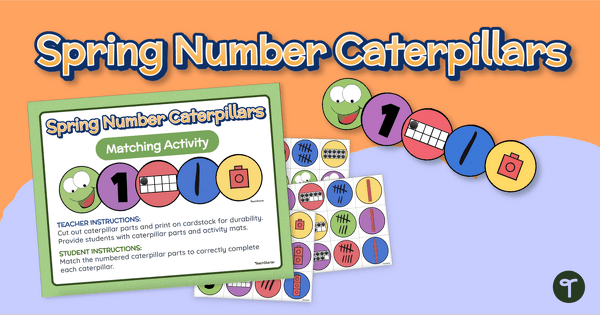
Spring "Numberpillars" — Kindergarten Math Center Activity
Match numbers 1-10 with their various visual representations to build a fun mathematical caterpillar!
- Free Plan
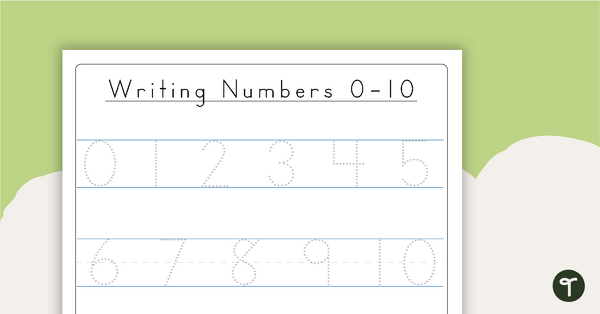
Tracing Numbers 0-10
A worksheet to assist students when learning how to write the numbers 0–10.
- Free Plan
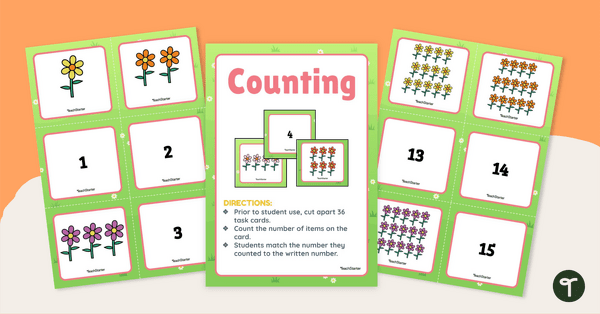
Kindergarten Counting 1-20 Matching Game
Use this matching game in your primary classroom to teach students to count quantities and match them to numbers (1-20).
- Free Plan
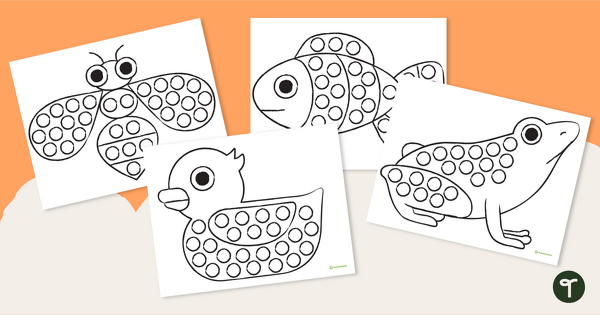
Roll, Count, and Cover - Dot Day Activities
Build fine motor skills and counting skills with a set of printable Roll, Count, and Color Dot Day Activities.
- Free Plan
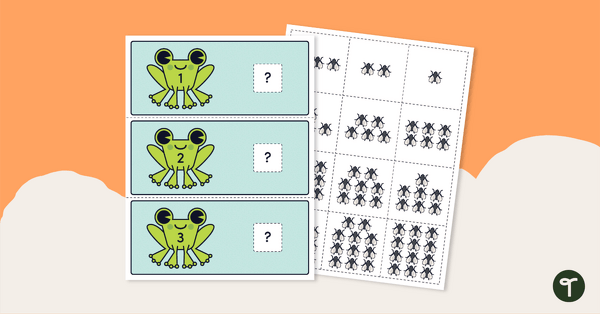
Frog and Flies Match-Up Activity (Counting to 12)
Practice counting numbers 1 to 12 with this fun frog and fly match-up activity.
- Free Plan
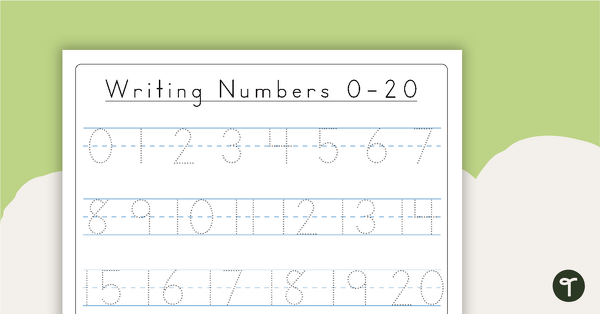
Tracing Numbers 0-20
Practice writing numbers 0–20 with this tracing activity.
- Free Plan
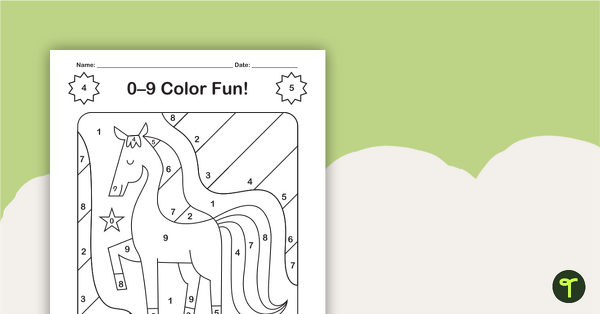
Color by Number - Numbers 0–9
A color by number activity for students to practice number recognition.
- Free Plan

How Many Are There? Counting to 20 Task Cards
Practice counting objects up to 20 with this set of 16 task cards.
- Plus Plan

0-20 Number and Word Flashcards - Birds
Use these flashcards when learning about the numbers 0–20.
- Free Plan
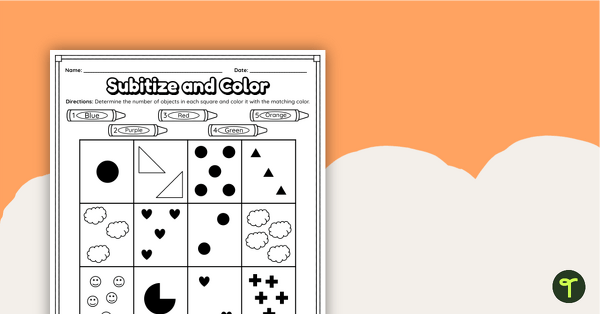
Subitize and Color – Worksheet
Practice subitizing to five with this color-by-number worksheet.
- Free Plan

Crazy Creatures – Counting Worksheet
Bring a bit of (not-so) spooky counting into kindergarten with a crazy creatures Halloween activity.
- Plus Plan
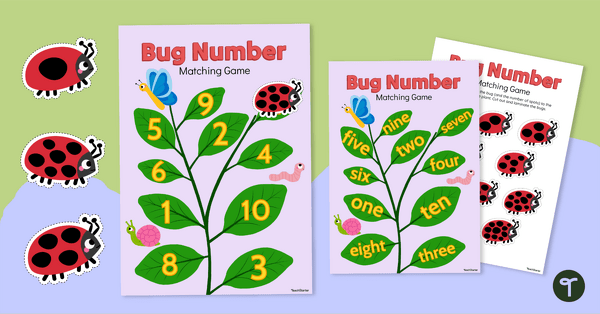
Numbers 1-10 Bug Matching Game
Help students learn to represent numbers 1-10 in picture, word and number form.
- Plus Plan
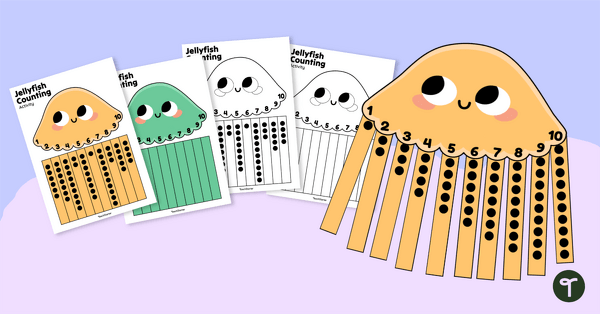
Jellyfish Count to 10 Matchup Activity
Use this match-up activity to help reinforce your students’ knowledge of one-to-one correspondence to 10.
- Plus Plan

Counting to 20 - Cut and Paste Worksheet
Count objects within 20 and match the total to its written number on this 2-page cut-and-paste worksheet.
- Free Plan
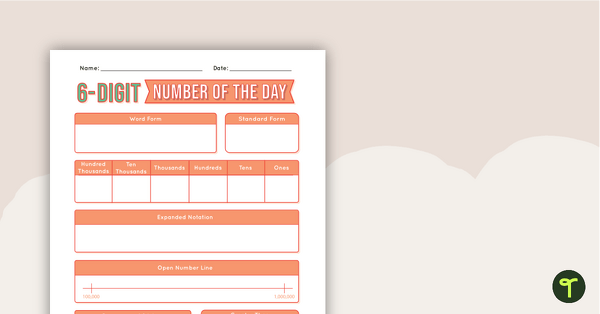
6-Digit Number of the Day Worksheet
A 6-digit place value worksheet to represent the number of the day in different ways.
- Free Plan
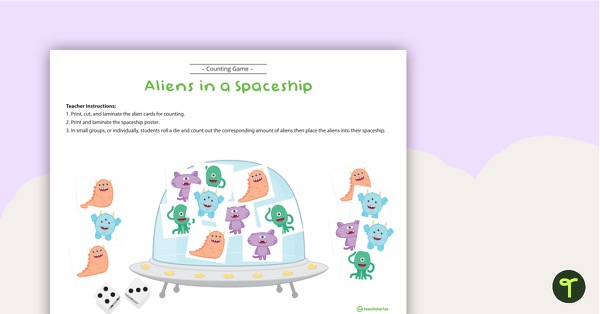
Aliens in a Spaceship Counting & Subitizing Game
Download a fun, hands-on game for teaching kids to count and use one-to-one correspondence or to subitize.
- Free Plan
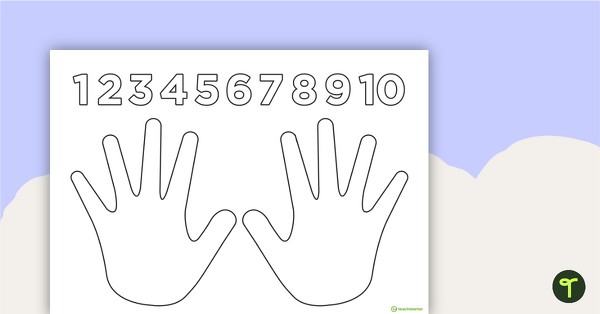
Free Counting From 1 to 10 Activity — Hands And Numbers Template
Teach counting from 1 to 10 and one-to-one correspondence with a creative (and free) printable activity for preschool, kindergarten, or 1st grade.
- Plus Plan
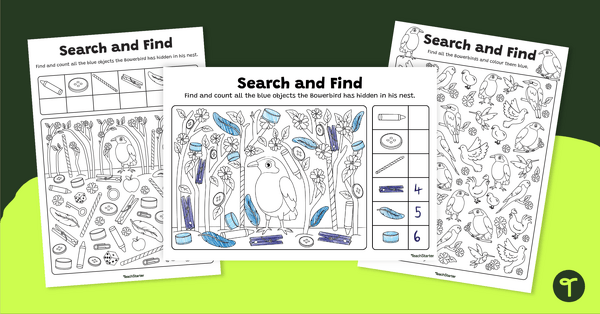
Search and Find Bowerbird Worksheets
Explore images of bowerbirds and search, find and count objects that bowerbirds collect or bowerbirds themselves.
- Plus Plan

Firefighter Color By Number Worksheet - Hundreds Chart
Print the perfect math activity for Fire Prevention Week with a printable firefighter hundreds chart color-by-number worksheet.
- Plus Plan

Number Anchor Charts - Math
Display this set of 1-20 math anchor charts in the classroom to encourage knowledge and understanding of each number.
- Free Plan
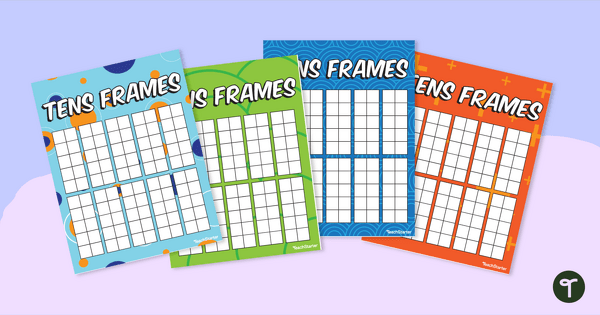
Numbers to 100 - Printable Tens Frames
Print a colorful set of tens frames to enhance your small group math lessons.
- Plus Plan
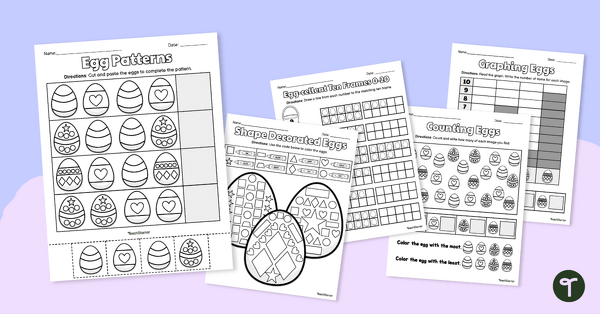
Kindergarten Math Review - Easter Worksheets
Practice various Kindergarten math concepts with a pack of Easter worksheets.
- Plus Plan
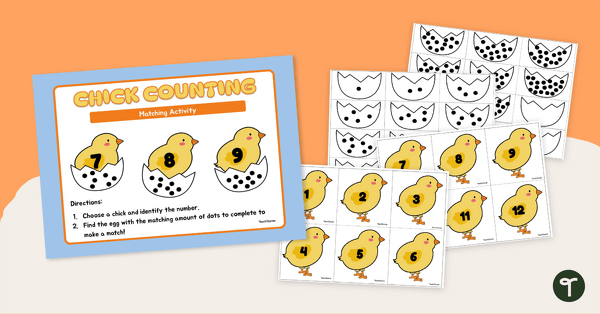
Count the Chicks! Easter Counting Activity
Practice recognizing, counting, and subitizing numbers from 1-20 with this Easter math activity.
- Plus Plan
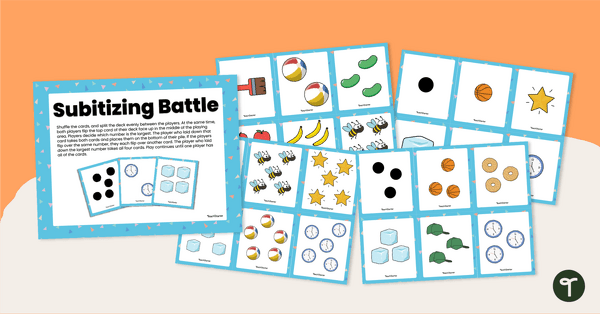
Subitizing Battle
Quickly subitize and compare numbers up to 5 with this fast-paced card game.
- Plus Plan
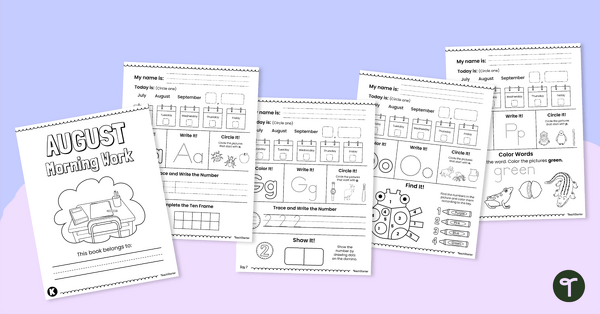
Kindergarten Morning Work (August)
Practice foundational math and language arts skills during the month of August with this collection of 23 kindergarten morning work worksheets.
- Plus Plan

Halloween Counting to 10 Worksheets
Count, write, and match numbers and objects with printable Halloween counting worksheets.
- Free Plan
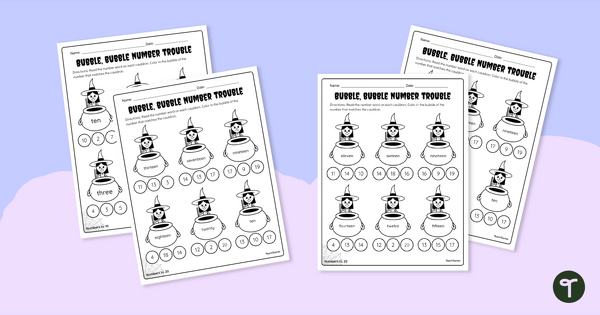
Halloween Number-Word Matching Worksheet
Match numbers and number words with a pack of Halloween printable math worksheets for kindergarten.
- Plus Plan
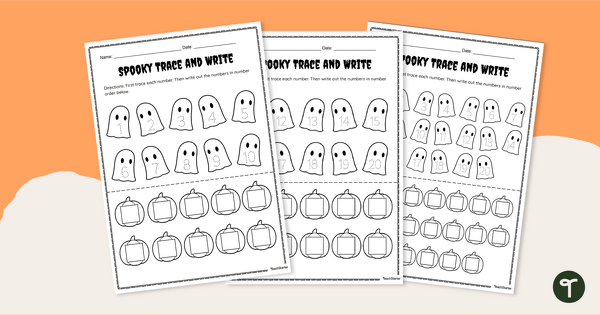
Halloween Tracing Numbers Worksheets
Trace and write numbers to twenty with a set of spooky Halloween tracing numbers worksheets.
- Plus Plan
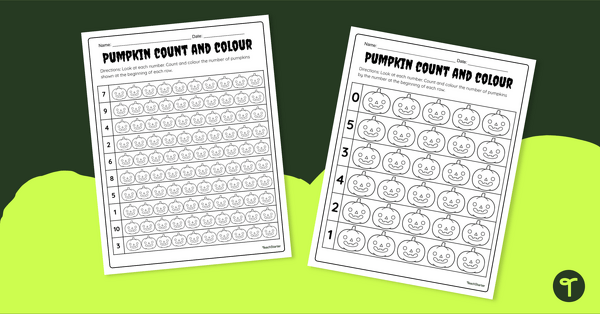
Pumpkin Count and Color - Halloween Math Worksheet
Use these Halloween math worksheets to practice counting sets of objects up to ten.
- Plus Plan
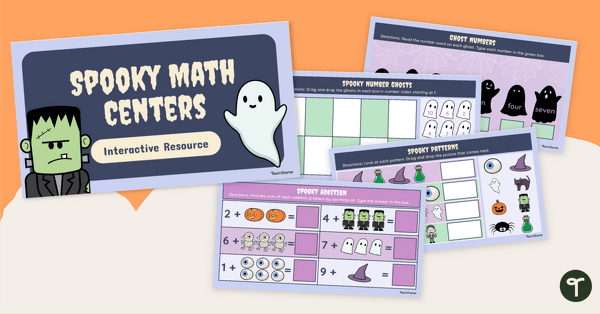
Spooky Halloween Math Centers for Kindergarten
Save time writing your October Math Lesson plans with a Digital Halloween math activity for kindergarten.
- Free Plan
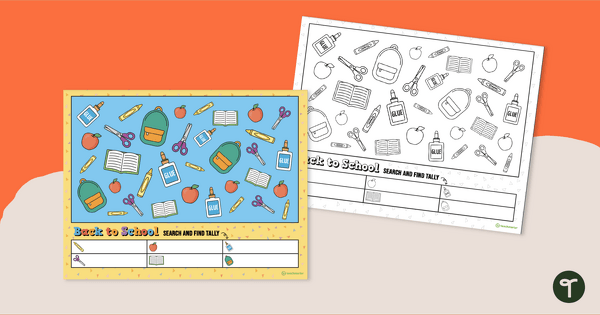
Search and Find – Back to School
Start the school year with a fun Back to School math activity for first graders.
- Free Plan
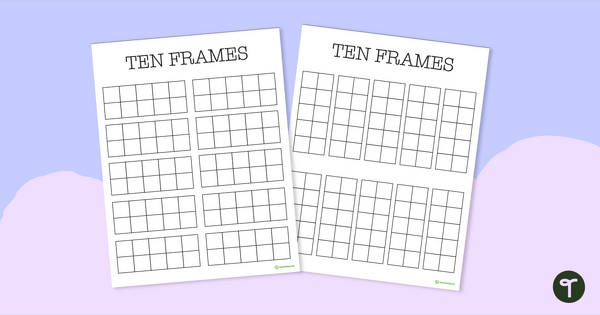
Ten Frame - Printable Templates
Print a set of 10 blank ten frames to use in various math lessons.